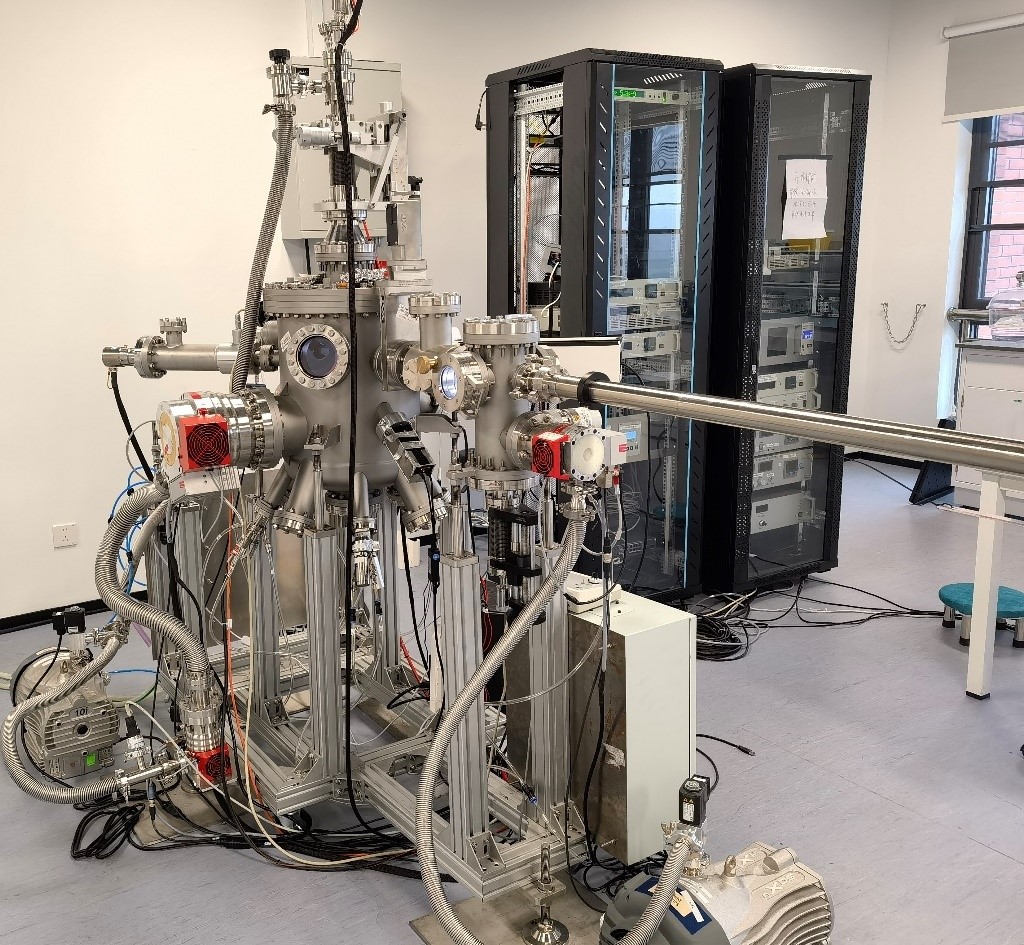MBE+ARPES and MBE II system
|
MBE+ARPES system combines atomically precise thin film growth by molecular beam epitaxy (MBE) and in-situ electronic structure characterization by angle-resolved photoemission spectroscopy (ARPES).
|
Case study of MBE+ARPES system: bandwidth control Mott delocalization of 4f electrons in epitaxial Ce films
|
Home-built MBE II system: dedicated for exploration of thin films of quantum materials.
|
Angle-resolved photoemission spectroscopy (ARPES) is a powerful technique for studying the band structure and quasiparticle excitations in solids. This technique is based on the photoelectric effect, where the absorption of photons (typically UV light) causes emission of electrons in the material and allows intrinsic electronic states to be revealed . Utilizing both energy and momentum conservation, ARPES is capable of directly measuring quasiparticle energy-momentum dispersions in solids, as well as their interaction with other collective excitations. The unique advantage of momentum-energy correspondence makes ARPES a very important tool for studying condensed matter system. At the center, we are particularly interested in combining advanced thin film growth techniques (molecular beam epitaxy) with APRES to create artificial low dimensional correlated electron systems and measure their intrinsic electronic structure. Our goal is to explore the effect of quantum confinement and interface coupling on the electronic correlations and unravel new quantum phases with exotic properties.




